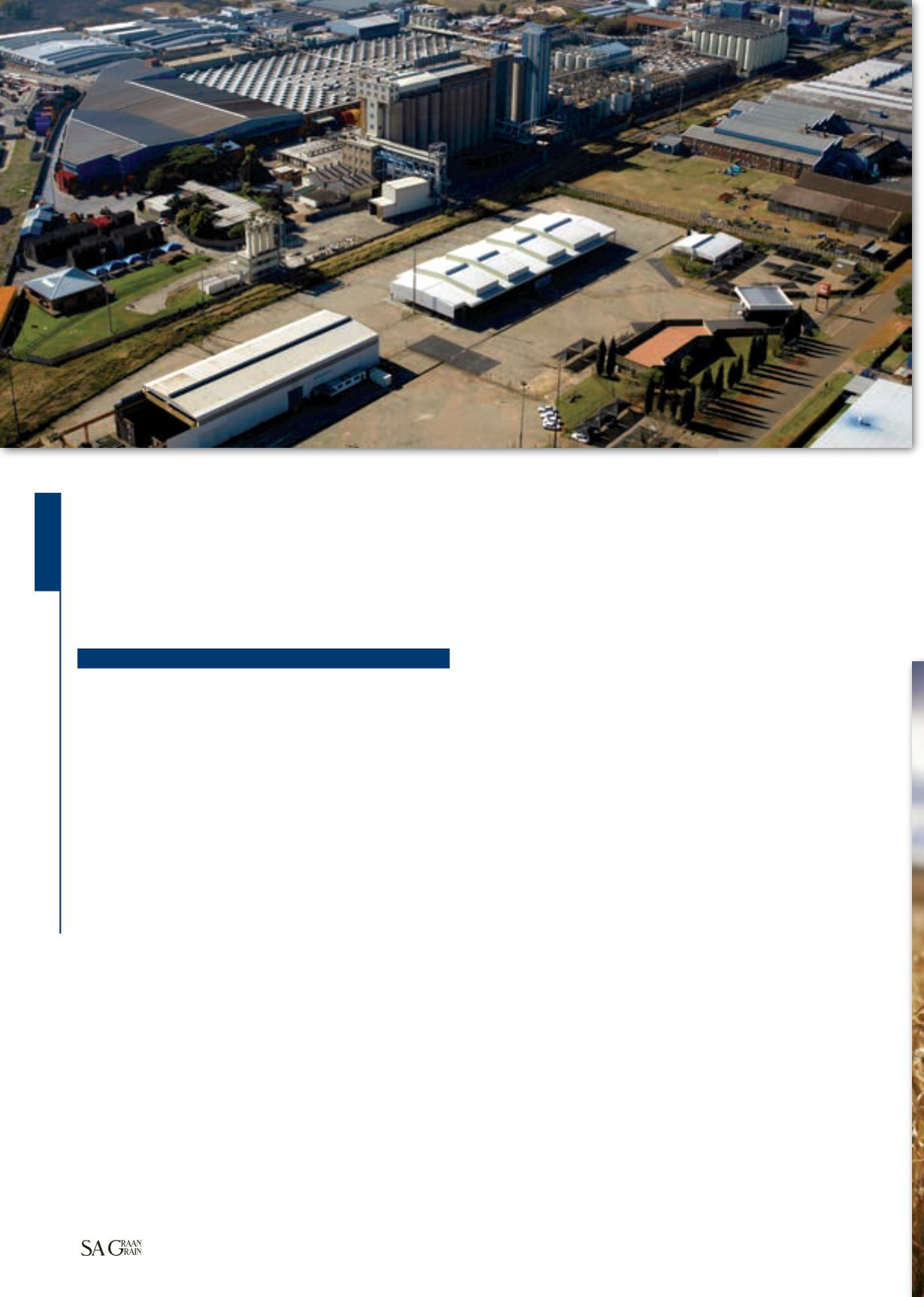
Barley industry
Markets
Oktober 2013
102
Supporting and growing SA’s
barley industry
AZURE JANNEKER, SAB MILLER
The local barley industry in South Africa is set to expand, which will
contribute considerably towards the country’s economy.
This follows the South African Breweries’ (SAB) announcement earlier
this year of the company’s intention to construct a new state-of-the-art,
R700 million barley maltings plant next to its Alrode Brewery in the south
of Johannesburg.
The new plant will have a capacity of 130 000 tons a year, effectively
increasing the company’s requirements for barley, which it intends to
source from within the local market. The brewer says this is a strategic
business objective to help secure the future growth and sustainability of
the local barley industry and equally of its business.
SAB currently has two malting plants, one at Caledon in the Western
Cape which malts about 180 000 tons of barley a year, and an existing
plant at Alrode which malts about 40 000 tons a year. The existing Alrode
plant is about 40 years old and coming towards the end of its economic
life. It will be decommissioned once the new plant is fully operational
in 2015.
Importantly, this new venture will allow SAB to play a leading role in the
growth and development of local emerging and small scale farmers,
creating a more broad-based agricultural supply chain, while continuing
its support of existing commercial famers.
“Throughout our value chain we seek to deliver superior value to three
key constituencies, South African retailers, consumers and society, in a
manner that supports the economic development of the country.
“The new SAB Maltings plant is indicative of SAB’s commitment to
invest in South Africa and its people. The agricultural sector provides us
with the opportunity to pay testimony to this investment and to make a
difference,” says Mr Thinus van Schoor, general manager SAB Maltings
and SAB Hops.
SAB’s support of the local agricultural sector, as in everything that it does,
is undeniable. The company buys more than 90% of its requirements,
including rawmaterials, from South African companies. The newmaltings
plant will take SAB’s local procurement spend to between 93% - 95%.
Equally, the investment is beneficial to SAB’s growth and sustainability
as a leading corporation in South Africa and one with a massive global
footprint.
“Our new maltings plant will provide significant cost savings and
growth benefits for SAB. It makes good financial sense to undertake this
investment. It will allow us to reduce our exposure to volatile international
markets and replace a significant share of our imported malt and barley
with local barley,” says Van Schoor.
Currently, SAB sources 65% of its barley requirements locally and the
remainder from Europe, Canada, Australia and Argentina. The company
now plans to optimise its imports and increase locally sourced barley to
between 90% and 95% of its requirements.
As a primary economic activity in rural areas, agriculture has been
identified as having the potential to create close to 1 million new jobs
by 2030, a significant contribution to South Africa’s overall employment
target, this according to government’s National Development Plan (NDP).
More explicitly, the NDP’s Vision 2030 indicates that rural communities
need to play a greater role, if not fully, in the economic and social life
of the country. It points out that rural economies will be supported by
agriculture. However, it concedes that job creation within the agricultural
sector, particularly at the levels anticipated, will not come easy. It will
require credible programmes, sound implementation, significant
resources and strong institutions.
The construction site for the new maltings plant.


